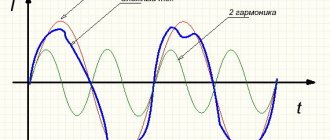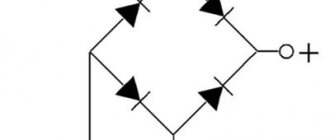Material graphene
A hydrocarbon crystal whose substance atoms are located on the same plane is called graphene. A sheet of this material has a thickness of no more than one atom, the substance has no color. The distinctive features of graphene are its high strength and energy capacity.
Russian scientists managed to synthesize such a substance artificially using silicon oxide. The resulting thickness was a million times thinner than a regular sheet of paper.
Many countries in the modern world are creating production lines for the production of graphene. Based on such a substance, it will be possible to create devices such as:
- ultra-thin monitors;
- semiconductor devices;
- graphene battery.
Interesting to know! Graphene-based power supplies do not contain toxic impurities or substances.
DIY graphene battery
It is already clear that creating a two-dimensional structure of graphene and securing its properties is not an easy task. Scientists all over the world are working on the problem. It is impossible to make a graphene battery in artisanal conditions.
But having learned that the carbon layer must be microscopically thin, craftsmen obtain this in different ways. They grind graphite into a fine powder, chemically treat it, and apply it to an aluminum substrate. We suggest that you familiarize yourself with one of the ways to obtain the desired composition.
Prospects for graphene
Widespread distribution of this substance will allow the creation of new production and research centers. It will become possible to use such material in production and for household needs. Serial production of graphene will make it possible to create:
- lines for the production of this material;
- new models of electric vehicles;
- specialized energy filling stations;
- opening of new power plants;
- creation of compact computers;
- will reduce harmful emissions.
What is a graphene battery
Thanks to the discovery of a hydrocarbon material with crystals one atom thick, researchers were faced with the question of creating a perfect battery with improved technical characteristics.
Power supply device
The operating principle of graphene power supplies is much reminiscent of common acid batteries. During the course of chemical reactions, electric current is generated and accumulated.
The design of graphene-based power supplies is reminiscent of lithium polymer batteries. Currently, in order to create a graphene polymer battery, several special technological processes have been developed.
The positive electrode is a material consisting of graphene and silicon plates. In one case, the negative electrode is a cobalt-based substance, in the second, magnesium oxide, which has a reduced cost. Manufacturing such power supplies at home is impossible due to the complexity of the production technology.
Kinds
Modern technologies consider two main directions for the development of graphene power sources:
- Lithium cobaltate is used as a negative electrode. A material consisting of monofilm and graphene acts as a positively charged electrode. The use of such batteries is not common since their production is due to increased costs, in addition, lithium-based salts are toxic.
- In the second embodiment of these batteries, magnesium-based compounds are used as the negative electrode. Such power sources have increased useful characteristics and are reduced in cost. The substances used in such batteries are not toxic.
Interesting to know! Magnesium graphene batteries are the most promising direction of development in this industry.
How does a graphene battery work?
In fact, a graphene battery in its structure is not much different from the structure of a lithium-ion battery with a solid electrolyte. The only thing is that in the case of graphene, the cathode is made of coal coke, due to the fact that its chemical. the composition is close to pure carbon, and graphite is replaced with graphene.
In order to increase the battery capacity, engineers added silicon sections between the graphene layers. And to increase the charging speed, small holes of 15-20 nanometers in diameter were made in the graphene plates.
That's all, other than that it's a regular battery.
Advantages and disadvantages
The main advantages of these batteries include:
- reduced weight of the product due to the use of light metals;
- using modern technologies, it was possible to create power supplies with small dimensions;
- increased internal conductivity;
- increased service life;
- increased internal capacity and wear resistance;
- have the ability to adjust basic parameters;
- relatively low cost;
- prevalence of hydrocarbon crystals in nature.
Manufacturers include the following disadvantages when using graphene batteries:
- They have a density that is not suitable for powering mobile electronics. A battery made for portable gadgets will be relatively large in size.
- A small number of energy filling stations for graphene batteries.
- Some electrodes are manufactured using lithium, which is a rare metal.
Video on graphene batteries
https://youtube.com/watch?v=u-ZrP8z2jJI
In nature, carbon has two forms - graphite and diamond. One of them is used in pencils, the other is the most durable material on the planet. In 2004, a group of Russian scientists discovered a third form: graphene.
The substance is a film-like structure of carbon atoms. This two-dimensional film does not occur in nature; the only way to obtain it is through production under pressure and temperature. In fact, the substance is a plane of graphite, which is separated from a single structure. The carbon atoms are connected to each other in a hexagonal crystal lattice. Due to the high density of bonds, the substance has a high degree of rigidity and a huge reserve of thermal conductivity. Due to the increased mobility of electrons in the substance, the material is promising for use in semiconductor circuits, batteries and nanotechnologies. Graphene batteries have a record capacity with low weight.
Alternative developments
Graphene supercapacitors are one of the alternative directions in the development of graphene-based power supplies. Thanks to the latest technologies, it has been possible to obtain a capacitor with increased capacity and high energy density. Moreover, with increasing operating temperature, the beneficial properties only improve.
A capacitor of this type is capable of restoring charge in a matter of minutes, depending on the power of the energy source. The production and research of graphene has facilitated the creation of ultra-thin semiconductors and high-capacity capacitors.
Important! The thickness of graphene in a semiconductor can reach the size of one atom.
The discovery of carbon electrode storage devices will accelerate the widespread use of electric vehicles and miniature electronic devices.
Development of graphene battery production
High-power graphene batteries are currently being produced on a production line in Spain. Relatively cheap batteries have one significant drawback - the large size of the power source. This type has found wide application for powering the on-board network of an electric vehicle; it has proven to be more reliable and safer than its predecessor, the lithium-ion battery. In 2021, the Spanish manufacturing company was supposed to begin mass production of new power supply developments, but there is still nothing known about the serial release of batteries.
Interesting to know! Spain is the only country where graphene batteries are mass produced.
American and European developers are at the research and development stage. However, scientists from Austria have made significant progress. They were able to place a monofilm of graphene in a helium shell, making it possible to keep the plates at a stable distance from each other. As a result, possible sticking was prevented.
Russian developments are aimed at creating a magnesium graphene battery with increased capacity and small dimensions. There is no information about mass production yet.
The graphene battery can now be considered a new generation of power sources. In the near future, it will be possible to replace vehicles with internal combustion engines with environmentally friendly vehicles powered by graphene batteries.
You may also be interested
.
Batteries 0
Graphene and batteries
The first area where it was decided to use graphene was the production of car batteries.
In the first experiments, graphene was combined with lithium, but as practice has shown, this turned out to be the wrong decision. And all because lithium is an extremely aggressive substance and upon contact with water, lithium explodes.
Therefore, they refused to install such battery modifications on electric vehicles, because in the event of an accident and damage to the battery there was a very high probability of fire.
Also, to produce such batteries, a large amount of lithium was needed - and this is an expensive metal.
Therefore, it was decided to look for an alternative to lithium and two options were found at once:
- American model. According to which the source of the reaction is lithium cobalt and a composite cathode of silicon and graphene wafers.
- Russian model. Where magnesium-graphene modification is used, where the lithium salt anode has been successfully replaced with magnesium oxide (a much more common and cheaper substance).
But despite the different approaches, the advantages and disadvantages of graphene batteries are identical.
Pros and cons of graphene batteries
If we compare classic lithium-ion batteries with graphene batteries, the latter are endowed with the following advantages:
- Graphene is produced from readily available and cheap raw materials.
- The produced material is very light, so one square meter of graphene weighs only 1 gram, and this makes it possible to significantly reduce the weight of the battery.
- Environmentalists can rest easy because graphene is environmentally friendly.
- Graphene has increased strength and water resistance.
- Damaged surface areas are easily restored.
- The conductivity of graphene is significantly higher than that of any other conductor (of course at the moment).
- Increased specific capacity. For example, a car with a graphene battery can travel up to 1 thousand kilometers on a single charge.
- The capacity of graphene batteries does not decrease due to frequent discharge-charge cycles.
- Full charging time is only 8 minutes.
As you can see, the advantages are just a carriage and a small cart, but there are also disadvantages, namely:
- Graphene has a fairly low density, so there are still significant limitations in its use. For example, a cell phone with a graphene battery will be bulky.











